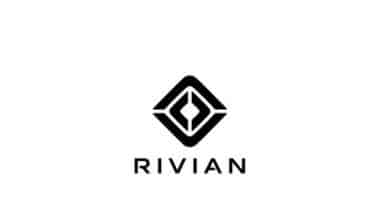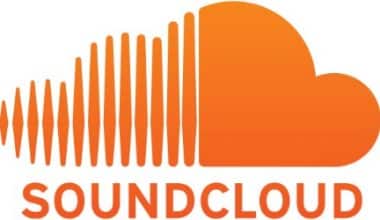The Vimeo logo’s symbols mimic a videotape winding from the host to the user’s storage. The logo represents modern technologies, cloud data storage, and remote access to many videos and video creation tools; which makes it unique. But are you aware of the factors that led to the design you see today. This article will help you understand the meaning of the Vimeo logo design and the history.
Vimeo Logo: Overview
Vimeo is a video hosting service that enables users to share various videos with their friends and followers. It is a website that allows users to upload, stream, and edit videos online. It was first introduced in the year 2004. On Vimeo, there is something for everyone, regardless of whether you are already an established author or are just beginning your journey into the world of content creation.
The company that poses the greatest threat to YouTube right now has more than 70 million users coming from every corner of the globe. Vimeo is a platform that enables users to upload and share videos that they have created. The working on the platform can be done in either a free or a paid capacity, and even the free account provides access to a significant number of useful tools and opportunities.
What is Vimeo?
Vimeo is the name of a popular online destination established in the United States in 2004 to develop a video hosting platform that is incredibly user-friendly and lightning-fast. It is currently the most formidable competitor YouTube has, as it boasts millions upon millions of devoted users from every region of the world.
Vimeo Logo: Meaning and History
This platform is dedicated to maintaining its connectivity while expanding its presence worldwide. The headquarters of the company is situated in New York City, and all of its other offices are scattered across the globe in various countries. The website attracts more than 175 million unique visitors every single month. Users have the option of signing up for free accounts (with a weekly data cap of 500 MB) or paying for premium subscriptions that increase the amount of content that can be downloaded.
But that isn’t the only reason Vimeo is getting people’s attention. Recognizable branding is an essential component of any successful video hosting strategy. The platform underwent two different iterations of its visual identity before finding its distinctive look.
2004 – 2005
The video-sharing website Vimeo was established in 2004 with the intention of facilitating the online dissemination of innovative ideas and engaging narratives. Its name appeared to be both an anagram for the word “movie” and a combination of the words “video” and “me.” Both interpretations were correct. This was the element that served as the foundation for the first logo that was created. The designers chose to use all uppercase letters in black sans serif font, and they placed the lettering on a gradient background consisting of white and gray.
2005 – 2006
The name of the video hosting service was anglicized to lower case in the year 2005. The font changed to look more like the handwritten one, although the “v” and “i” remained distinct and there was only a small gap between the letters. The developers rounded the letters and eliminated all corners, making them look more modern. In addition, they painted the word blue and changed the background color to white without adding any other tones.
2004 – 2005
The video-sharing website Vimeo was established in 2004 with the intention of facilitating the online dissemination of innovative ideas and engaging narratives. Its name appeared to be both an anagram for the word “movie” and a combination of the words “video” and “me.” Both interpretations were correct. This was the element that served as the foundation for the first logo that was created. The designers chose to use all uppercase letters in black sans serif font and placed the lettering on a gradient background of white and gray.
2005 – 2006
The name of the video hosting service was anglicized to lower case in the year 2005. The font changed to look more like the handwritten one, although the “v” and “i” remained distinct and there was only a small gap between the letters. The developers rounded the letters and eliminated all corners, making them look more modern. In addition, they painted the word blue and changed the background color to white without adding any other tones.
2006 – Today
The year 2006 marked a pivotal turning point in the development of Vimeo. It was at that time that the American video platform got its now-iconic logo, which is the primary means by which the platform can be identified. The plan is derived from the one that came before it. Nevertheless, there are still distinctions between the two: the designers connected the letters, increased the thickness of the lines, and aligned all of the diagonal strokes so that they are located at the same angle. An icon in the shape of a “v” suddenly materialized at the same time as the full inscription did.
Vimeo Logo: Fonts and Colors
Because it is more distinctive, colorful, and easily recognizable, the Vimeo wordmark has taken the place of the full-fledged graphic symbol. The designers made an effort to convey the laid-back atmosphere of the service in order to inspire a sense of implicit trust in the customers. Even the very slight angles that show up at the very end of the letters “v” and “m” do not detract from the overall impression. Although they have the appearance of serifs, in reality, they are not.
The full logo, which includes the video hosting service’s name and the “v” icon, is written in the chic Black Rose font from the Regular subfamily. This font was designed by typographer Michael Hagemann in 2009 and is part of the family. However, the designers subtly adjusted the lettering by bringing the spaces between the letters closer together. Because of the lengthy connections between the letters in the original typeface, the inscription would have required a little bit more room if it had been printed in that style.
Vimeo Logo: Symbol
The year 2005 marked the end of global experiments with color when blue was chosen to replace black. In 2006, the developers decided to switch the color to a darker version of Vimeo Blue, which they designated with the number 1AB7EA. While this was going on, the background kept its traditional white color.
What does Vimeo stand for?
Vimeo was launched in 2004. The name is a play on “video” and “me,” meaning my personal video creations.
Is Vimeo better than YouTube?
When comparing the technical features between Youtube and Vimeo, Vimeo has the advantage. Vimeo’s far superior privacy system allows users to post videos that can only be seen by followers, specifically selected accounts, or viewed with a password. There is a clear difference between this and YouTube’s privacy features. YouTube only offers three privacy options to its users: public, private, and unlisted. This only allows users to create a shareable link to a private video.
Vimeo’s ability to host and embed flawless high-quality videos is another technical advantage. Those looking to share professional work can rest assured that their videos will not be compressed, unlike the majority of YouTube content, which is compressed for space and data purposes. When hosting or embedding videos, Vimeo users can customize their appearance with color options, branding, and recommended videos. YouTube video embedding is far less customizable, with the same player and random recommended videos at the end, making it less appealing for embedding an important video on a website.
How Does Vimeo Make Money?
Vimeo generates revenue primarily through a SaaS business model, in which it sells subscriptions to cloud-based software. Vimeo uses a “freemium” pricing strategy, which includes free membership and access to its video tools as well as paid subscription plans for advanced video capabilities.
Through 1.7 million subscribers, Vimeo generated $392 million in revenue in 2021. Vimeo earns money in three ways:
Basic (free) memberships
A basic membership entitles users to free video creation, recording, uploading, and sharing via the website and native apps. Vimeo’s free users face weekly and total video upload limits. They don’t have access to advanced video features like live streaming or the ability to add team members.
At natural points in the user’s experience, such as when a free user approaches or exceeds an uploaded video cap, Vimeo offers the option to upgrade to a paid subscription.
Vimeo also prominently displays the advanced video capabilities of Vimeo’s subscription plans within the free user product experience. In conclusion, a basic plan is a marketing tool for upselling paid services.
Self-Serve Subscription Plans
Vimeo charges fees ranging from $7 per month to $900 per year for features that vary according to plan type. Video creation, collaboration, distribution, hosting, marketing, monetization, and analytics are among the features available.
Vimeo’s higher-priced plans also allow for the addition of multiple team members. Nearly 15% of Vimeo subscribers had added team members as of December 31, 2021.
Sales-Assisted Subscription Plans
Sales-assisted plans include more features than self-serve plans, as well as dedicated support, account management, service level agreements, and professional live event services.
Almost 80% of Vimeo’s new sales-assisted contracts came from existing free users or self-serve subscribers. Sales-assisted customers accounted for 30% of Vimeo’s revenue as of December 31, 2021.
Vimeo Logo: Related Articles
- SUBSCRIPTION MANAGEMENT: Best Practices & Software Solutions
- HOW TO START A YOUTUBE CHANNEL: Step by step Guide
- VIDEO IDEAS: Best Tips & What You Should Know
- How to Make Money From YouTube Videos
- EMBEDDING VIDEO: Meaning, Powerpoint, WordPress & HTML






